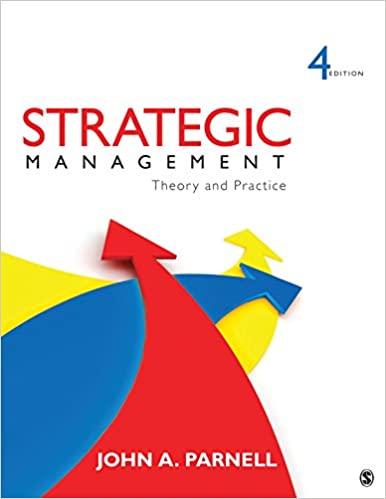Chicago-based mail-order supplier of sailboat hardware and equipment. In the mid-1970s, Comer began to emphasize clothing and
Question:
Chicago-based mail-order supplier of sailboat hardware and equipment. In the mid-1970s, Comer began to emphasize clothing and soft luggage and subsequently eliminated sailboat hardware from the product line. In 1979, Lands’ End moved its warehouse and fulfillment operations to rural Dodgeville, Wisconsin.
In 1981, Lands’ End launched a national advertising campaign to promote the company’s brand name. The company grew following the campaign, emphasizing folksy catalog copy to sell traditional clothing in basic colors. Lands’ End went public in 1986.
In 1990, Comer stepped down as CEO and was replaced by Richard Anderson. During this same year, the firm experienced a significant inventory and fulfillment crisis. As sales declined in the early part of the year, Lands’ End cut inventories and released a myriad of new products.
Christmas orders surged, however, and Lands’ End was unable to fulfill customer demand on its promised same-day basis. As a result, the company lost sales and incurred substantial shipping costs by fulfilling back orders at its own expense. The situation improved in the following year.
In 1991, Lands’ End introduced its first catalog in the United Kingdom and opened a distribution center there shortly thereafter. Former L.L.Bean executive William End was named CEO in 1993 but was replaced by Michael Smith in 1994. In the same year, the company was shipping small mailings of catalogs in France, Germany, and the Netherlands from its UK distribution center.
Lands’ End opened an outlet store in the United Kingdom and started selling products online in 1995. Product-line debates and sales declines led to another round of management changes in 1998, when David Dyer replaced Smith as CEO. Restructuring followed, as more than 10% of the salaried workforce was eliminated.
Lands’ End has been active on the web in recent years, including new sites in 1999 in Germany, Japan, and the United Kingdom. In the United States, products are marketed on the Internet, as well as through traditional catalogs. Lands’ End is the leading online clothing retailer in the United States and arguably one of the most successful since the web’s development.
Emphasis is placed on traditionally styled apparel, bed and bath items, casual clothing for adults and children, accessories, shoes, and soft luggage. Lands’ End is organized into four segments, including (1) adult apparel; (2) specialty goods; (3) international operations; and
(4) shipping, handling, and gift wrap operations. The company seeks to provide the highest levels of quality and service in the industry along with an unequivocal ironclad guarantee.
Sears bought Lands’ End in 2002 for nearly $2 billion but has struggled to build the anticipated synergy. Sears and Kmart merged in 2004. Sears opened about 75 separate store-in-store Lands’ End shops inside Sears retail stores in 2006 and another 24 Lands’ End Canvas shops in Sears stores in 2010.
Case Challenges
1. How and why did Lands’ End succeed as an online retailer during the late 1990s and early 2000s when a number of Internet businesses failed?
2. How important is further international expansion to Lands’ End’s success?
3. Has Sears’ acquisition of Lands’ End helped or hindered the company? Explain.
Step by Step Answer:






